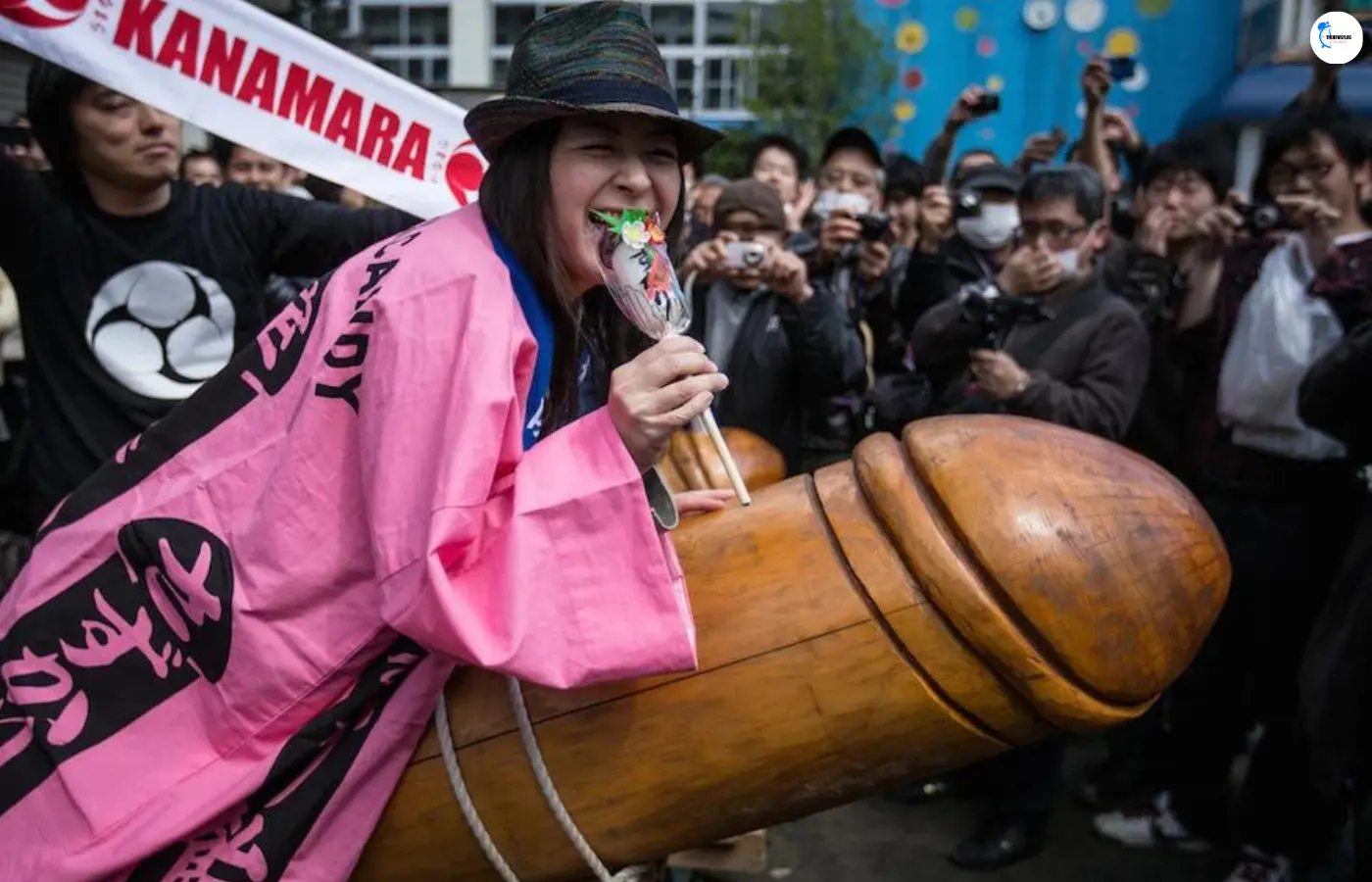Kanamara Matsuri (Penis Festival): In the past, sex workers would come to the festival to pray for protection from sexually transmitted diseases. Today, the festival is known as an activity to fight HIV. The Kanamara Matsuri, literally translated into the festival of the iron pℯnis, is a Shinto festival (a native religion of Japan that provides for the worship of kami, deities, natural spirits, or simply spiritual presences) that takes place every year on the first Sunday of April in Kawasaki, Japan.
See Also | Sonu Real Name: What is the real name of sonu in taarak mehta ka ooltah chashmah?

The legend dates back to 1600 and tells tales of a young girl struck by a curse that led her to hide a demon inside her v@gina that castrated the unfortunate who had intimate relations with her. A blacksmith made for her an iron pℯnis capable of breaking the demon’s teeth; thus, the Wakamiya shrine was born in her honor. This sacred place later became half of the prostitutes who asked for protection against venereal diseases.
The festival, which consists of a parade of gigantic phalluses, was first held in 1977 and is now linked to the theme of fertility and marital bliss.
Why is Kanamara Matsuri celebrated?
Kanamara Matsuri is a phallic-worshipping ritual in Japan, which has become a tourist attraction in recent years. Prostitutes believe that praying to the iron phallus statue will protect them from STDs. Others believe praying to the deity there will give prosperity and protection from disease or other evils.
See Also | Salama Khalid Divorce: Khalid Al Ameri and Salama Mohamed divorced!!!
Kanamara Matsuri (Penis Festival): The annual Shinto Kanamara Matsuri, or the Festival of the Steel Phallus recently took over the streets of Kawasaki, Japan. The 39-year-old festival is held to honor fertility and male genitals. The festival is rooted in a 17th-century tale of a sharp-toothed demon who falls in love with a beautiful woman. After a steel phallus destroys the demon’s teeth, the woman is freed, vanquishing the demon forever. Today the festival raises awareness about safe sex and raises funds for HIV prevention. Elliot Hill and Joya Mia Italiano look closer inside the phallic festival on the Lip News.
How is Kanamara Matsuri celebrated?
Kanamara Matsuri (Penis Festival): Celebrating the phallus in Kawasaki. Venue: Kanayama Shrine When: Early Apr 2024. The Kanamara Matsuri (かなまら祭り or ”Festival of the Steel Phallus”) is one of the most unusual festivals in Japan. The event is held annually in April at the Kanayama shrine in Kawasaki, centered around the male and female reproductive.
1. This festival is called Kanemara Matsuri. This festival is celebrated every year on the first Sunday of April.
2. The childbirth rate is very low in Japan. Either people do not have time or money to have children. An interesting fact is that more adult diapers are sold than baby diapers.
3. The oldest people on earth are two Japanese people, 117 and 116 years old.
4. Japan has the lowest crime rate in the world.
5. Japan is a country made up of 6852 islands.
6. In Japan, children themselves clean the schools.
7. Japan has more earthquakes than any other country in the world.
8. Children are allowed to sleep in schools.
9. Japan has the largest number of elderly people relative to its population.
10. People in Japan do not like to sit idle.
The Japanese are the hardest-working people in the world.
11 Most of the people of Japan follow the Shinto religion, along with Buddhism, Christianity, and Islam, which is also a very fast-growing religion in Japan.
12. Friendship with India and Japan is one of the oldest countries.
See Also | Shahrukh Khan and Gautam Gambhir share a unique photo: Some relationships last a lifetime.
What is the penis festival in Japan like?
Kanamara Matsuri (Penis Festival): I attended once and got bored (and left) long before it ended. It was fun to buy some lollipops in the shape of a penis or a vagina to give to selected friends. But as matsuris go, I thought it was below average. Also, because of the subject matter and closeness to Tokyo, a disproportionate percentage of the attendees were foreigners.